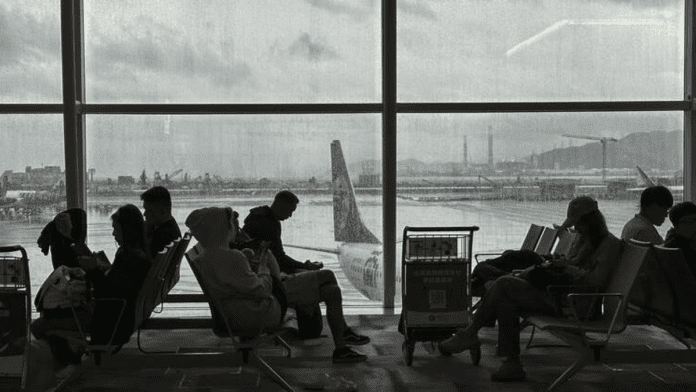🕒 Last updated on July 23, 2025
Tropical Storm Wipha has thrown air travel into disarray across Southeast Asia. The storm, which began as a low-pressure system off the coast of the Philippines, has grown stronger and now affects five countries: the Philippines, Taiwan, Hong Kong, Macau, and Vietnam. The impact has been severe, with major airports closed, hundreds of flights canceled, and thousands of passengers left stranded.
Wipha Spreads Across Several Countries, Air Travel Is Hard Hit
The storm struck the Philippines on July 16 for the first time. Heavy rains flooded villages, roads, and airports, especially in Manila, forcing over 20,000 people into evacuation centers. Philippine Airlines and Cebu Pacific were quick to cancel flights between July 16 and 19. Both international and domestic flights were impacted by the cancellations. Flooding was made worse by dam water releases, which continued to raise water levels and cause more delays. The estimated damage to infrastructure was over 526 million pesos, or around $9.2 million.
Next in Wipha’s path was Taiwan. By July 19, the storm had become much stronger and started to bring high-speed winds and heavy rains. Ferry and domestic flight operations were canceled or stopped. At Taipei Airport and others around the island, long lines formed as passengers waited to rebook or reschedule. In cities like Taitung, flash floods and mudslides led to urgent evacuations. The country’s weather bureau warned that rough weather would continue for several more days, further affecting travel plans.
The Strong Upsurge of Wipha Affects Vietnam, Macau, and Hong Kong
More transport issues arose as Wipha brushed over Hong Kong on its way west. Hong Kong International Airport (HKIA) canceled all of its flights on July 20. There were massive lines of stranded travelers at the terminal as a result of the cancellation of more than 200 flights.
🌍 Climate Chaos? Shell, Enbridge, Aker BP Walk Out as Net Zero Rules Tighten
The city saw storm surges, flooding, and strong winds, though no major destruction was reported. Airports began reopening on July 21, but delays continued throughout the day.
Macau, which is located near Hong Kong and is known for its casinos and tourism, also felt the storm’s power. Airports there were fully shut down, and passengers were forced to wait long hours for any updates. Many travelers had to rebook their trips multiple times, as the schedules remained uncertain.
Vietnam, meanwhile, started bracing for the storm a little later. Wipha made landfall in central Vietnam just as the weekend approached. Vietnam Airlines canceled flights at both Tan Son Nhat (SGN) and Noi Bai (HAN) airports. The government deployed over 346,000 soldiers to assist in evacuations and public safety. The National Center for Hydro-Meteorological Forecasting predicted even more rainfall and flight cancellations in the days ahead. Airports remained partly functional, but delays and interruptions were widespread.
Flight Chaos Grows Across the Region Amid Safety Concerns
Even in countries not directly in Wipha’s path, the storm has created ripple effects. Thailand, for example, has issued several weather alerts. Though the storm was expected to only skim past, strong winds and heavy rain were predicted for Bangkok and nearby regions. Suvarnabhumi Airport (BKK), one of the busiest in Asia, reported some cancellations and warned travelers to prepare for more. Airlines in Thailand asked passengers to check their flight status before heading to the airport.
💥 Ukraine’s darkest night—Ivano-Frankivsk endures largest missile & drone barrage yet
Governments and airlines across the affected regions are working together to manage the crisis. Emergency hotlines and airport help desks are active. Social media updates from airlines and aviation authorities are helping passengers rebook flights or seek refunds. In the Philippines, carriers are allowing changes without extra charges. Hong Kong and Taiwan airports are updating their websites and social channels frequently.
In some regions, the storm even forced government-level actions. Border restrictions were imposed between certain cities, leading to even more canceled trips. Travelers across the region are being advised to remain alert, stay indoors if possible, and avoid non-essential travel.
Airports across Southeast Asia continue to experience delays, cancellations, and long lines at counters. For anyone flying in or out of the region, real-time updates from airlines and airport authorities are crucial.

